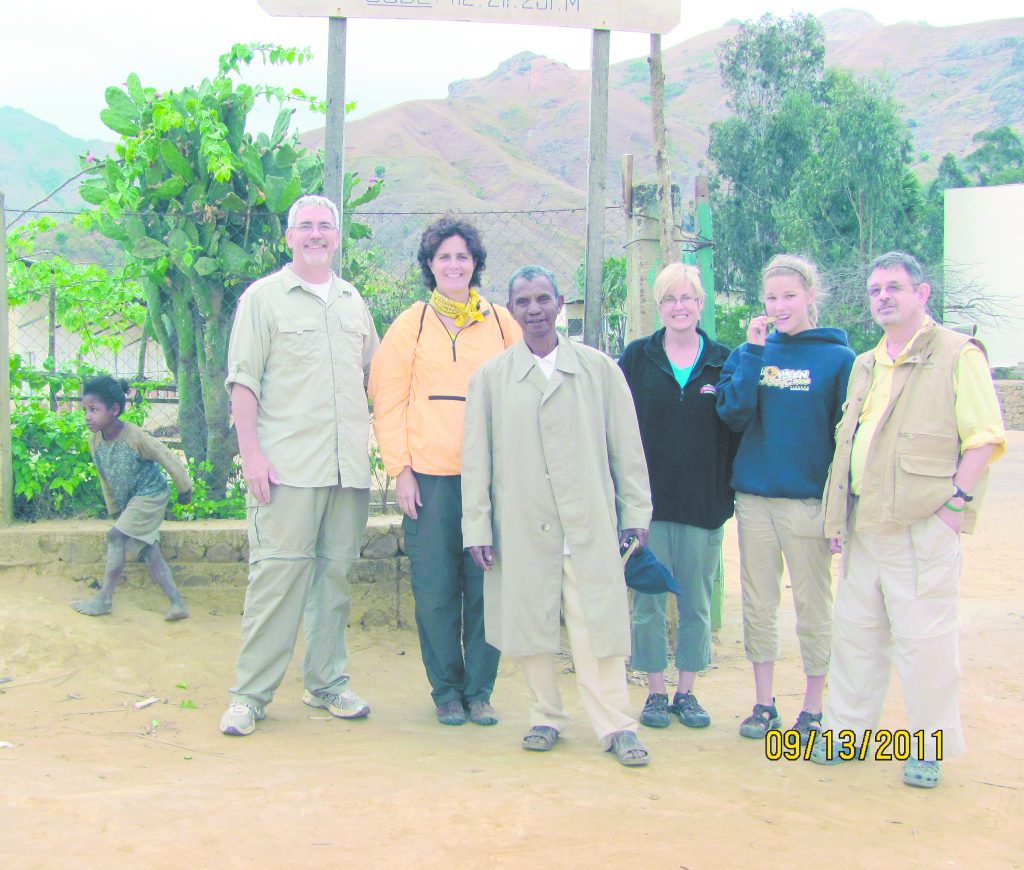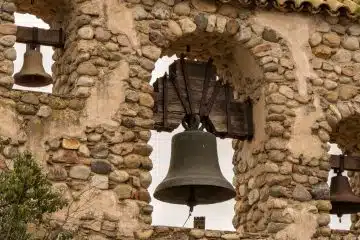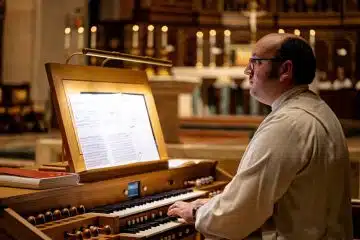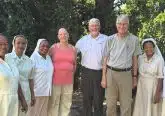Twinning: Cincinnati and Madagascar “This is seeing the body of Christ in a completely different fashion”

In 1999, Divine Providence Sister Francis Maag, visited Madagascar as a representative of her religious community. She returned with a dream.
A long-time school principal, Sister Francis was then director of religious education at St. Therese Little Flower Parish in Mount Airy. She was moved by the enthusiasm of the young nuns of her order in the impoverished island nation off the east coast of Africa. “They had a lot of young nuns and nuns in training,” she said. “They were on fire with the love of God and doing good work in a variety of different settings.”
Sister Francis said she returned “with a fire under me” — a mission to connect Little Flower with missions serving people thousands of miles away.
Next June, Jerome Gabis, a psychologist and member of what Sister Maag calls her “dream team,” will lead members of the Parish Life Commission at St. Therese on a third visit to the country where today more than 100 Sisters of Divine Providence work with the native people in need. Most are Madagascan sisters with as handful of French nuns. There are no longer any American nuns in Madagascar.
The American group will include Mike Gable, director of the Mission Office for the Archdiocese of Cincinnati.
Sister Francis said the twinning project with Madagascar started when she found a group of people at the parish who said, “Hey, we need to do more than what we do locally. How about having Sister Francis talk about Madagascar?”
The Mission Office encouraged a parish visit to the island. Parish Council and Little Flower’s pastor gave their blessing, and approved a five-year plan. Two more five-year plans followed. Although Sister Francis left the parish in 2014 to serve at a northern Kentucky home for underprivileged seniors and adults, the Madagascar connection continues with parishioners at the helm.
Sister Francis still forwards any money given to her to the Madagascar mission. “It’s one of the poorest countries in the world,” she said. “You see utter poverty. You see the men standing around with no jobs. There’s hardly any electricity, only a couple hours a day in the main house. It has a few hours of electric supply but, basically, after that it is pure darkness. You need a flashlight to get up and go to the bathroom. If you go to the rain forest, there’s another major problem. To travel any distance is an issue. From Cincinnati to Dayton, Ohio, takes us about an hour; in Madagascar that would take eight hours using roads with holes two or three feet deep.
“But, when you’re with the people in church, they are singing out with voices in harmony and rhythm. They enjoy church,” she added. “The children press around you when you walk through a village. They’re with their families and they’re friendly. In fact, one of the qualities they pride themselves on is the idea of being friendly and outgoing, and welcoming people.”
There is a large Catholic representation in Madagascar, a country of more than 13 million, Sister Francis said. It has several dioceses, and several religious orders, including Franciscans, serve in the country. Over the years, St. Therese has provided between $40,000 and $50,000 in aid, using the money for everything from building a six-room school in the village of Tavanina, to providing oxen for farming and digging wells for fresh water.
Gabis, who is helping coordinate the 2018 journey, went on the parish’s first trip in 2005. “We spent two weeks,” he said. “We traveled about the country on the dirt roads that were really impassable. We went into the bush country and visited some of the missions there. We adopted a village that was interested in building a school and we helped them by raising funds. We met the townspeople and they gave us gifts of coconut, sugar cane, eggs, grapefruit and chickens.”
The Little Flower group prays for Madagascar every Thursday. “We mention them in the rosary, and we also have fundraisers for them,” Gabis said.
The group will see the school they built on the 2018 visit., but “mostly, we have developed close friendships with the nuns,” he said. We do meet the locals, of course. They are congenial, hard-working people, and spend most of their days working to live.
“It’s a moving experience beyond words. This is seeing the body of Christ in a completely different fashion, in a different culture, and seeing God working with them through the generosity of the sisters.”













